Cairo and Luxor

Pharaohs, pyramids, temples and sphinxes

Egypt has existed for almost as long as time itself, and hosts an an unparalleled wealth of history and legend. Its tourist slogan around the year 2000 was “welcome to our seventh millennium”, suitably putting the West’s gas at a peep. Beyond its plethora of world-famous archaeological attractions, Egypt’s more recent history has been defined not just by tourism, but geopolitics in the form of the Suez Canal, through which a large portion of the world’s physical trade passes.
I visited Egypt as a child in 1990, staying for five days at the Luxor Hilton, followed by two nights at Cairo’s Ramses Hilton, both on the banks of the Nile. Dad’s calculated risk of eating Egyptian ice cream did not pay off, he was confined to barracks but still able to see the pyramids at a distance from the hotel window. Egypt is a place I certainly intend to visit again sometime – while I remember it well, it’s clear from the photos that I wasn’t quite old enough at the time to appreciate the experience properly.
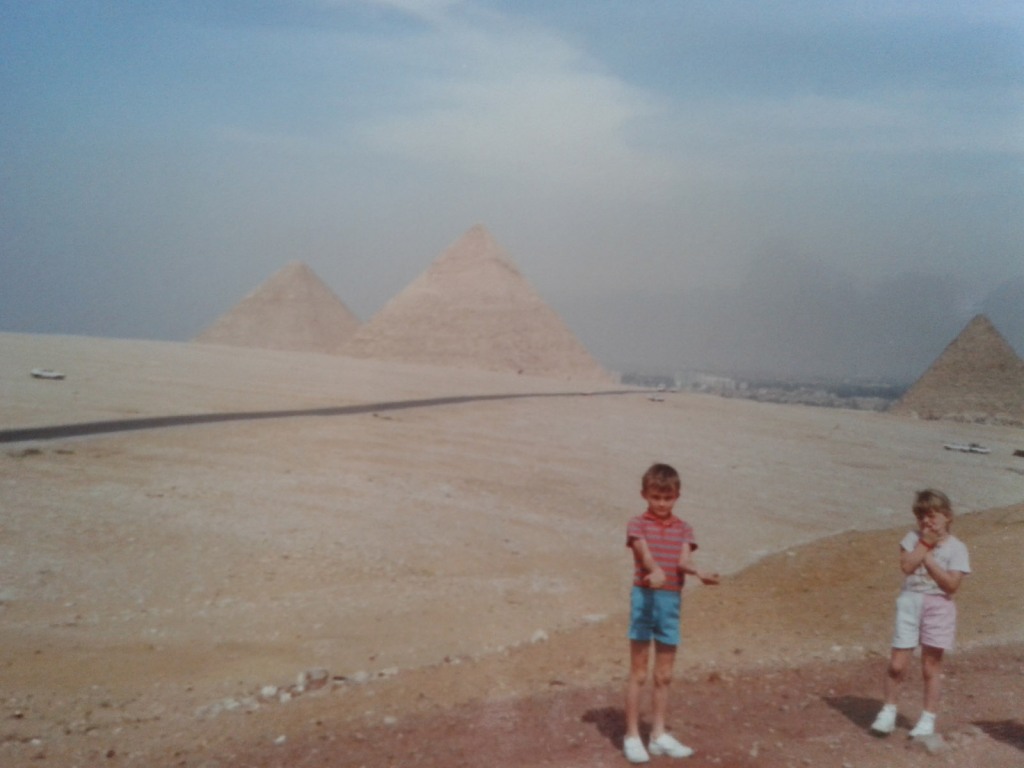
The Pyramids of Giza were once in the desert, but now modern Cairo extends right to their boundary. The Great Pyramid of Khufu is the largest on the left, although can appear smaller as its base is lower down. The Pyramid of Khafre sits in the middle, and the Pyramid of Menakaure on the right. My sister and I appear less than impressed.
A slightly obscured view of the Great Sphinx of Giza, with the pyramids in the background. The Sphinx dates back to around 2500 BC and is carved in a single chunk straight from the bedrock. The Greeks named the Sphinx, meaning “mysterious”, as it was buried to the neck in sand until excavated (not for the first time) in the first century AD by the Romans. There was some restoration work going on during our visit, not that our photos would have been any better without the scaffolding.
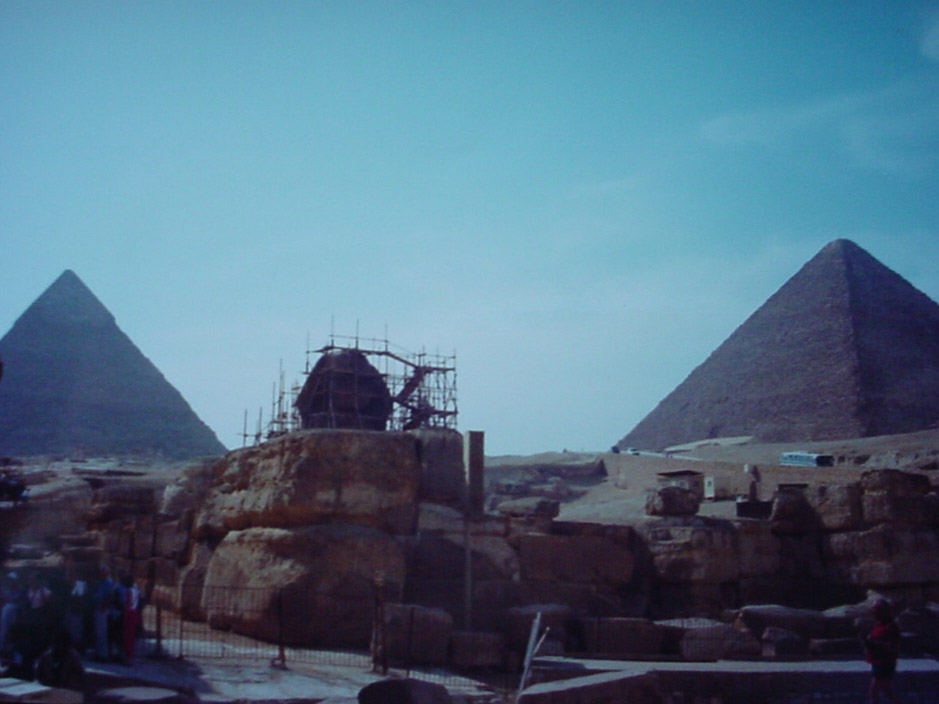

The Pyramid of Khufu, in the centre of the Giza Necropolis, with a camel-mounted policeman on patrol. This pyramid is distinguished by the remaining smooth(ish) facing stone remaining on its upper third, just visible here. All the pyramids were built around 2500 BC, and are the only remaining Wonder of the Ancient World. Originally they would have shone in the desert sun, with the smooth facing stone reaching down to the dunes, and the crowning pyramidion rumoured to be plated in gold.
Closer detail of the Pyramid of Khafre, as modelled by my sister and I for full appreciation of its enormous scale. I doubt you’d get away with hopping up on it these days. The pyramid is 136 metres tall with a base of 215 metres and weighs nearly six million tonnes, making it significantly larger and orders of magnitude heavier than its modern cousin in Las Vegas. It was a good time for visiting pyramids, as we found ourselves in Mexico later the same year.
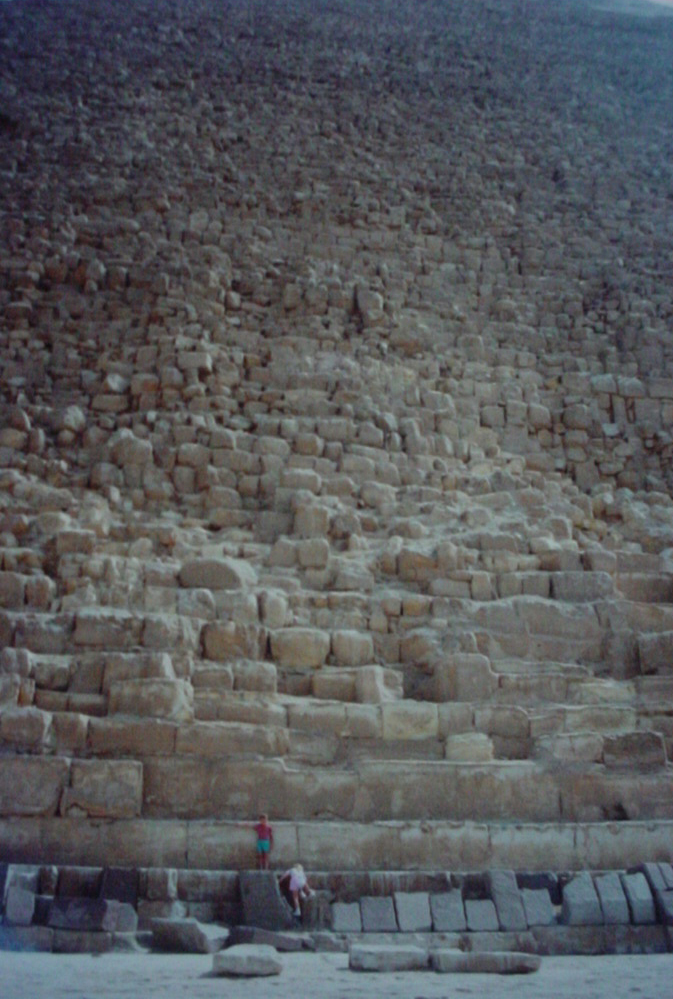

The Step Pyramid of Djoser is the oldest of the Egyptian Pyramids, completed around 2650 BC but not small at over 60 metres in height. It is believed to have been designed by Imhotep, as the first massive stone tomb anywhere in the world, and is only a few kilometres south of the Giza Necropolis. I appear to be building my own sandy pyramid and showing the requisite amount of interest in the wonder behind.
The Mortuary Temple of Hatsepsut at Deir-el Bahari, backing right on to the Valley of the Kings on the other side of the cliffs. Hatsepsut was the first female pharaoh, ruling until 1458 BC, however the temple was desecrated soon after by her successor. Over the years other occupiers caused damage including Christian images painted over original carvings from 2000 years earlier.


The Luxor Temple, with the Court of Ramses in the foreground, looking towards the entrance known as the First Pylon (the two large blocks), with a single obelisk visible in between. Its obelisk partner was pinched by the French in the 1830s, and now sits in Paris. Temple construction began around 1400 BC, and beyond is the Avenue of Sphinxes.
At the opposite end of the Avenue of Sphinxes is Karnak, the most visited attraction in Egypt after the pyramids. It was founded around 1970 BC, with the Great Hypostle Hall at its centre dating from around 1224 BC, an assembly of 134 columns. In the distance the Obelisk of Thutmose I can be seen.


Part of the James Bond film The Spy Who Loved Me was filmed in the Hypostle Hall at Karnak, with Bond dodging Jaws amongst the columns. As a wee laddie, it was certainly a great place for hide and seek.
Detail of some of the sunken relief work carried out by Ramesses II inside the Hypostle Hall.
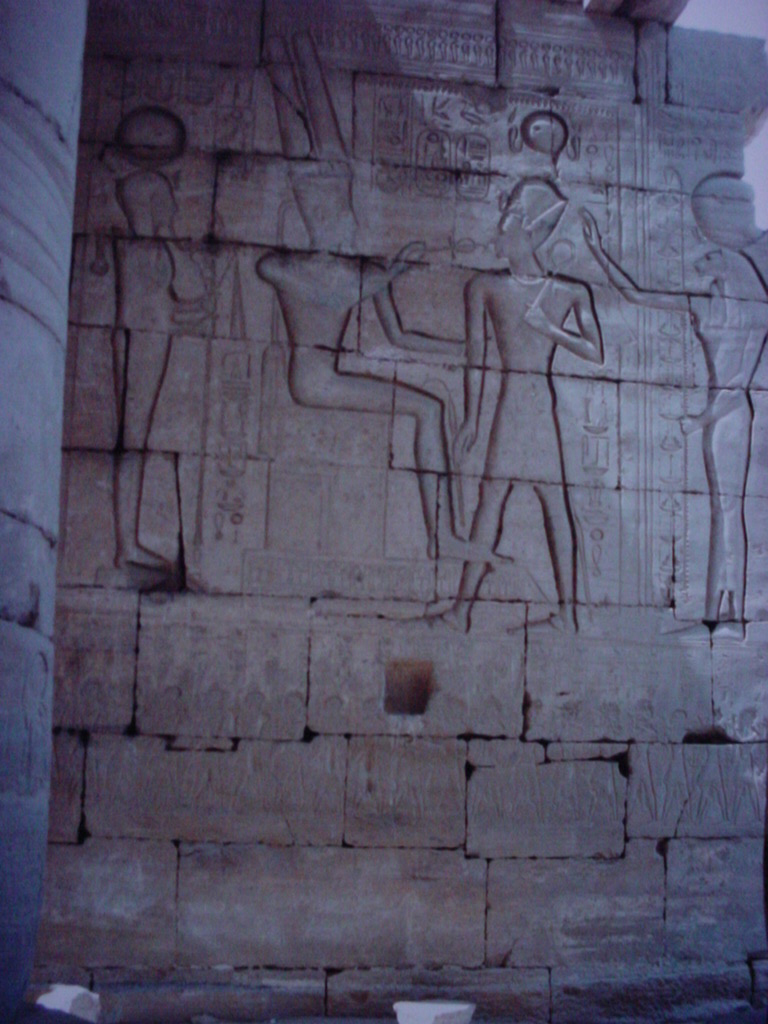
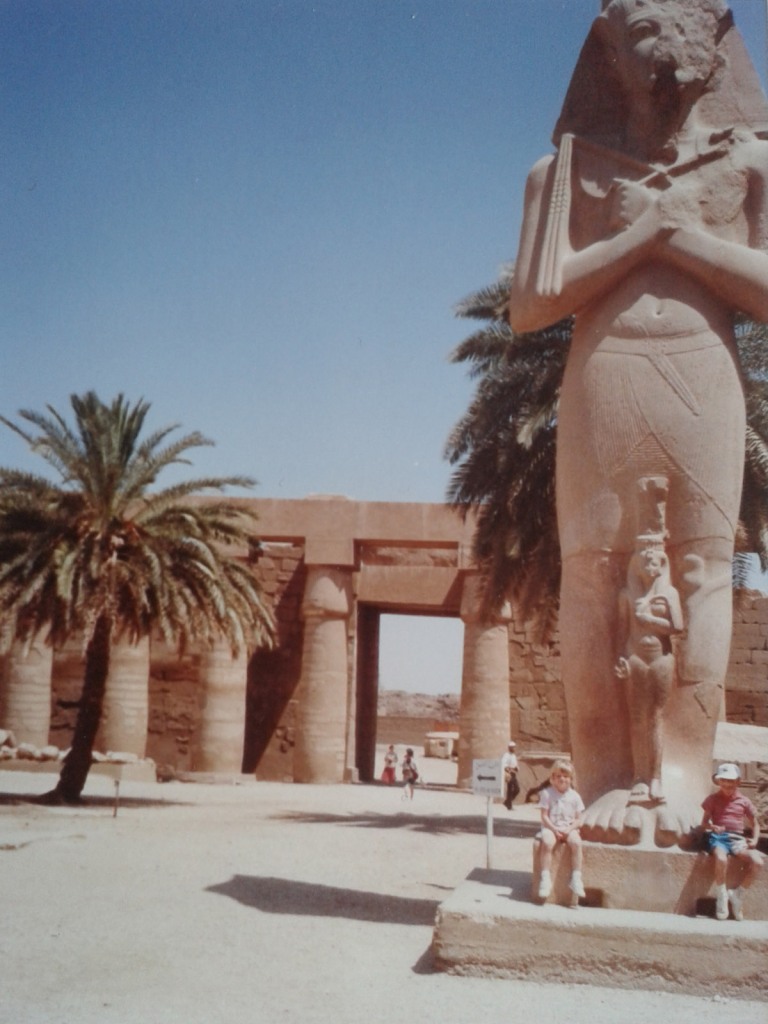
A large statue of Ramses II (sometimes spelled Ramesses) stands in the large courtyard outside the hall of columns, and also features his wife Nefertari (not to scale). Also known as Ramses the Great, his mummy is one of the best preserved and incredibly still features largely complete hair and skin, preserved since his death at the age of 90 in 1213 BC.
Created 2002 | Updated 2023
